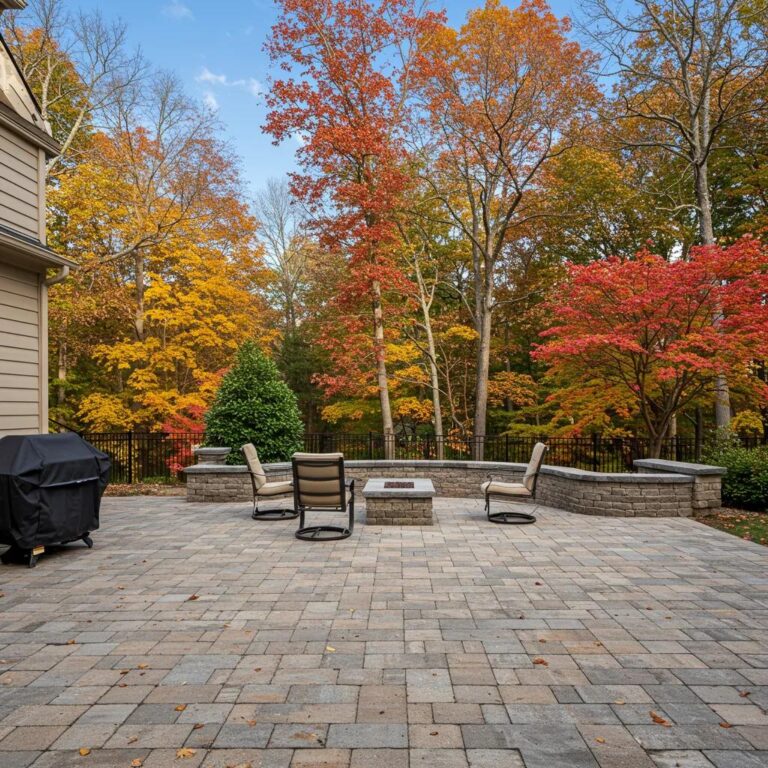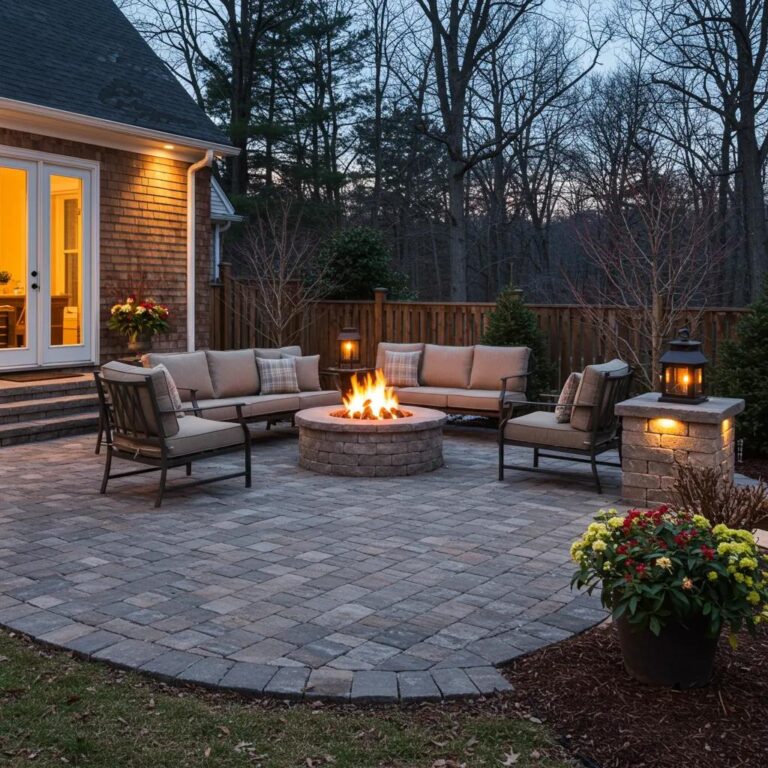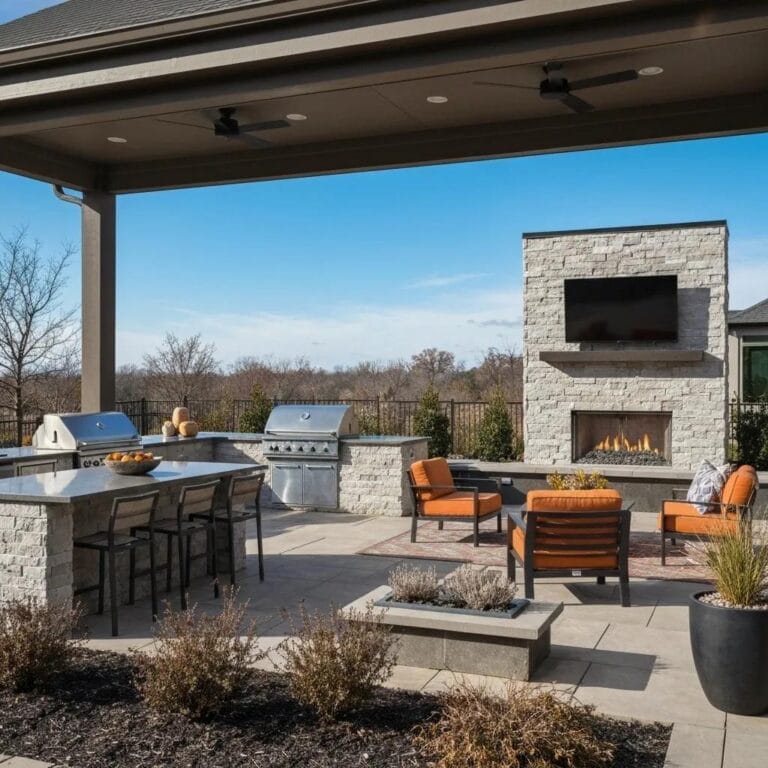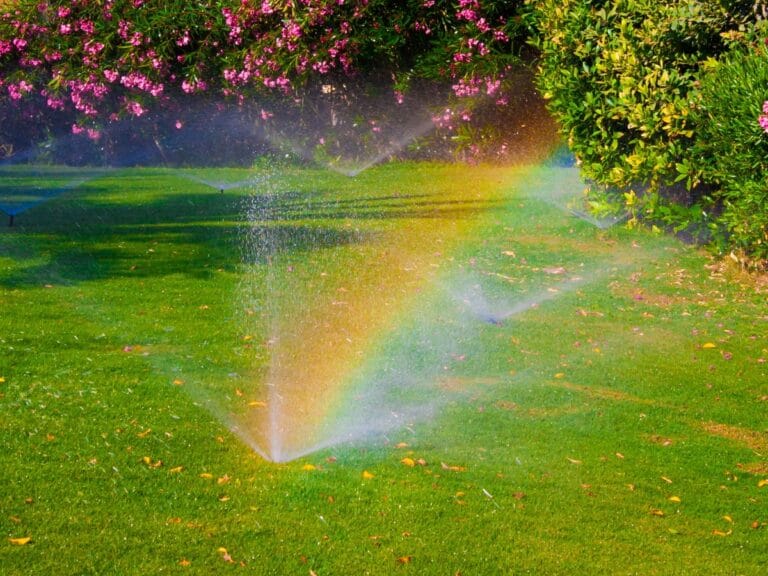When considering a fireplace for your home, the choice often comes down to wood burning vs gas fireplaces. Many homeowners wonder which option offers better value over time.
This article will provide a detailed analysis of the initial installation costs, ongoing maintenance requirements, and fuelefficiency of both types. By understanding these factors, you’ll gain insights to help you make an informed decision that aligns with your heating needs and budget.
Whether you’re looking for an efficient heating source or a cozy ambiance, knowing how electricity and natural gas compare can simplify your choice.
Wood Burning vs Gas Fireplaces: Which One Wins for Your Home?
Overview of Wood Burning vs Gas Fireplaces
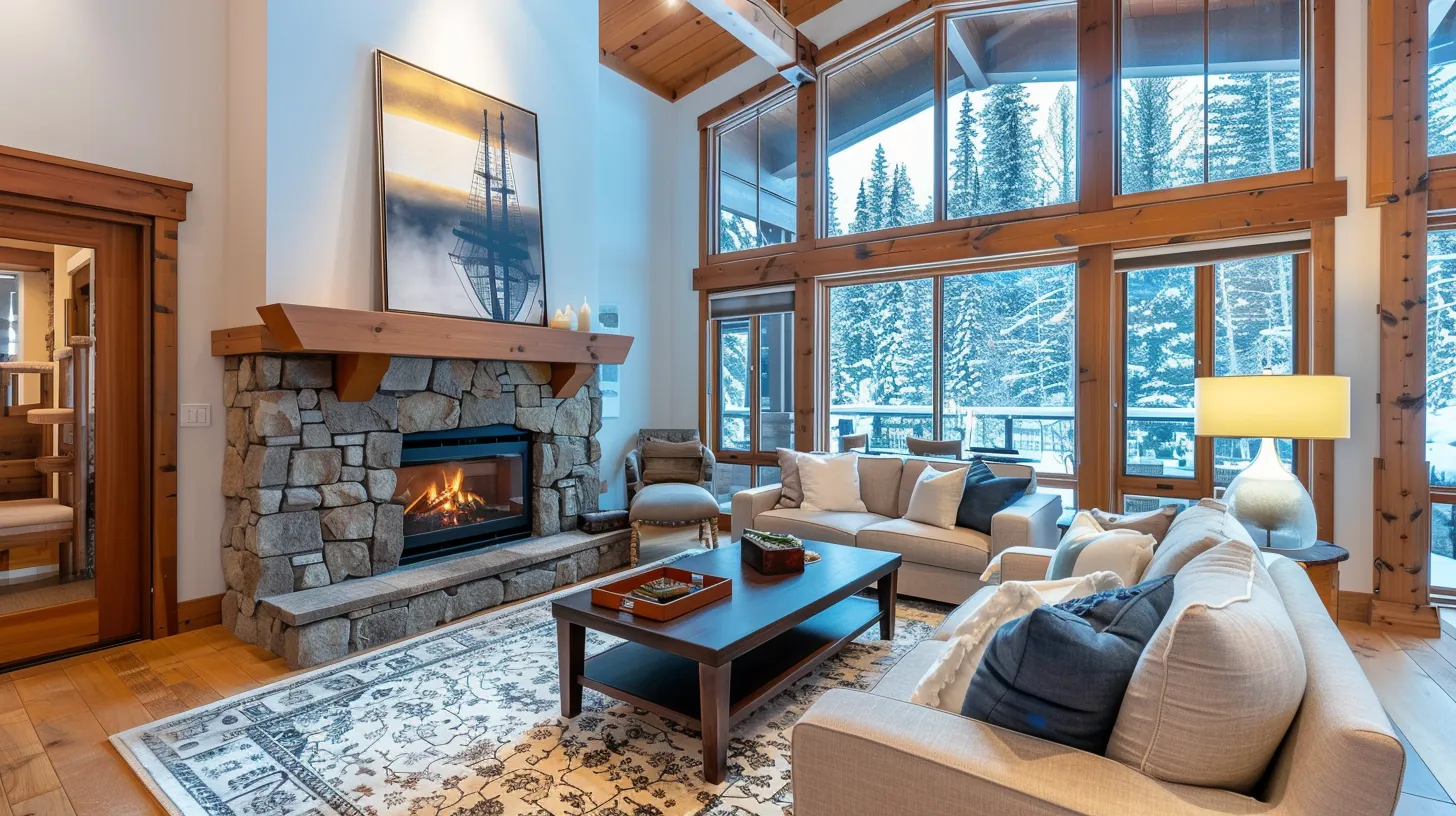
Understanding the key differences between wood-burning and gas fireplaces helps you make informed decisions about maintenance and costs. Wood-burning models offer a traditional flame and ambiance but require regular chimney sweeps to manage smoke and residues.
In contrast, gas fireplaces provide convenience and cleaner energy options while adhering to specific regulations. Each type has its benefits, which we will explore further.
Key Differences Between Wood Burning and Gas Fireplaces
When considering the key differences between wood-burning and gas fireplaces, one major factor is the light and ambiance they provide.
Wood-burning fireplaces create a traditional and rustic atmosphere with real flames, perfect for cozy evenings. However, they often require more maintenance, including regular chimney inspections to prevent creosote buildup and smoke issues.
In comparison, gas fireplaces are easier to manage; they typically operate through a gas valve and a pipe system, which minimizes the need for frequent cleaning and upkeep.
Another important distinction is their impact on the environment. Wood-burning units can emit more pollutants, making them less environmentally friendly, whereas gas fireplaces offer a cleaner burning option, which greatly reduces emissions.
This translates not only to a healthier environment but also to potential cost savings over time due to lower maintenance and fewer required services. Understanding these differences helps you choose the right type of fireplace for your home and lifestyle:
| Feature | Wood-Burning Fireplaces | Gas Fireplaces |
|---|---|---|
| Light & Ambiance | Produces real flames, traditional feel | Consistent flame, modern convenience |
| Maintenance Needs | Regular chimney sweeping required | Low maintenance with a valve and pipe system |
| Environmental Impact | Higher emissions, less environmentally friendly | Cleaner burn, more energy-efficient |
Benefits of Each Fireplace Type
Wood-burning fireplaces offer a uniquely warm ambiance and a traditional charm that many homeowners appreciate. The use of naturalwood can create a cozy atmosphere, making it ideal for family gatherings or cold winter nights.
However, it’s essential to be aware of safety concerns, such as carbon monoxide emissions, which require diligent maintenance, including regular chimney cleaning and inspections to prevent buildup and ensure efficiency.
On the other hand, gas fireplaces provide a modern solution with their user-friendly operation, often controlled by a thermostat. This convenience allows for precise temperature management without the hassle of sourcing or transporting wood.
Gas units also produce fewer pollutants compared to their wood-burning counterparts, making them an environmentally friendly choice that reduces the risk of carbon monoxide exposure while offering a higher degree of efficiency.
The choice between wood-burning and gas fireplaces goes beyond warmth; it dips into the costs of bringing one home. Let’s look at what you will pay to install each type and see which warms both your living space and your wallet.
Initial Installation Costs of Wood-Burning vs. Gas Fireplaces
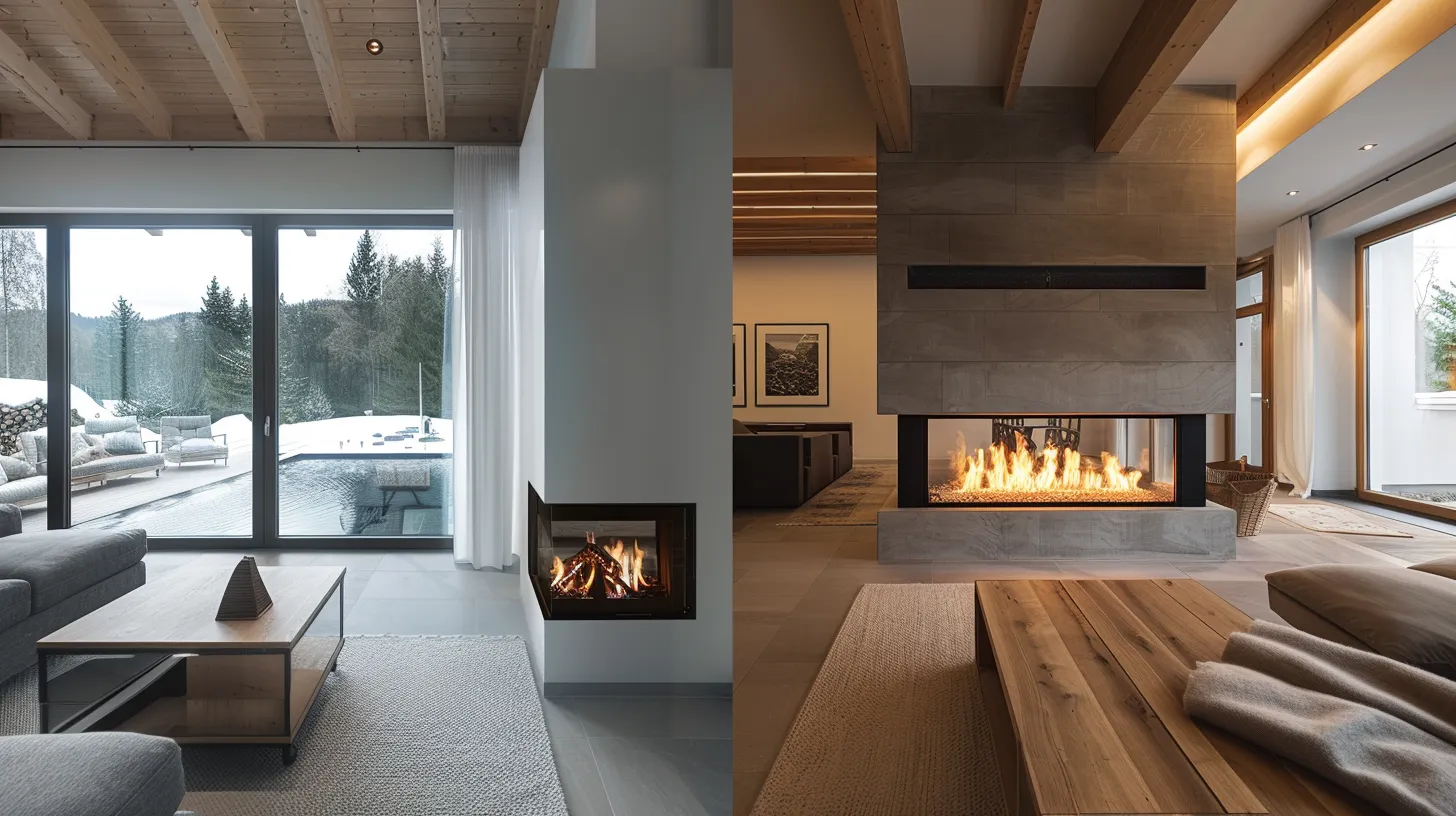
Your choice between a wood-burning fireplace versus gas systems significantly influences your initial installation costs. You’ll find that wood-burning fireplaces generally incur higher expenses due to the necessary venting and structural support requirements.
In contrast, gas fireplaces often have more straightforward installations, especially with remote control mechanisms. Factors such as location, fuel availability, and local regulations regarding air pollution can also affect these costs.
As you assess these financial commitments, understanding the specific breakdown of those installation expenses will provide clarity. You’ll appreciate how these costs can vary based on the features and complexity of the chosen system.
Breakdown of Installation Expenses for Wood-Burning Fireplaces
When assessing the installation expenses for wood-burning fireplaces, it’s essential to factor in components such as the flue and chimney repair.
These systems require a proper ventilation setup to ensure safe operation, often leading to higher costs compared to gas fireplace installations. For instance, if you choose a more complex flue system, your expenses can increase significantly due to the materials and labor involved in proper installation.
Another aspect to consider is the cost of firewood. Unlike a gas stove that runs on natural gas, wood-burning fireplaces depend on a consistent supply of firewood, which adds ongoing expenses for storage and purchasing.
If you do not have access to affordable firewood, the overall costs can escalate further, making it vital to consider these aspects when deciding between a gas fireplace versus a wood-burning fireplace.
Overview of Installation Costs for Gas Fireplaces
The installation costs of gas fireplaces generally present a more straightforward option compared to wood-burning alternatives. You can expect lower costs due to simpler venting requirements and the absence of a traditional chimney, which can significantly reduce masonry expenses.
Additionally, this ease of installation can contribute positively to your home insurance, as many policies favor systems that enhance indoor air quality and safety.
Moreover, the investment in gas fireplace installation often includes features like ceramic logs and remote controls, which enhance the user experience while ensuring efficient heating.
As you consider these options, keep in mind that the long-term benefits of efficient heating and lower emissions can help offset the initial installation costs, making gas fireplaces an appealing choice for your home.
Factors Influencing Installation Costs
When determining the installation costs of wood-burning versus gas fireplaces, several factors come into play, including the materials used and the type of hearth you choose.
A wood-burning fireplace typically requires robust materials like brick and steel to ensure proper construction and safety, which can significantly raise initial expenses. Conversely, gas fireplaces often utilize lightweight materials and have simpler installation processes, contributing to lower overall costs.
Another critical factor is the potential impact of pollutants, which can influence your choice of fireplace and its necessary installations. Wood-burning units necessitate proper venting and chimney systems to mitigate emissions, increasing the structural requirements and costs.
In contrast, gas fireplaces usually employ less complicated venting solutions, making them a more economical option for installation without compromising quality or the desired atmosphere in your home.
Once the costs are clear, the focus shifts to what comes next. Understanding the upkeep for each type of fireplace is vital for enjoying the warmth they provide.
Ongoing Maintenance Requirements
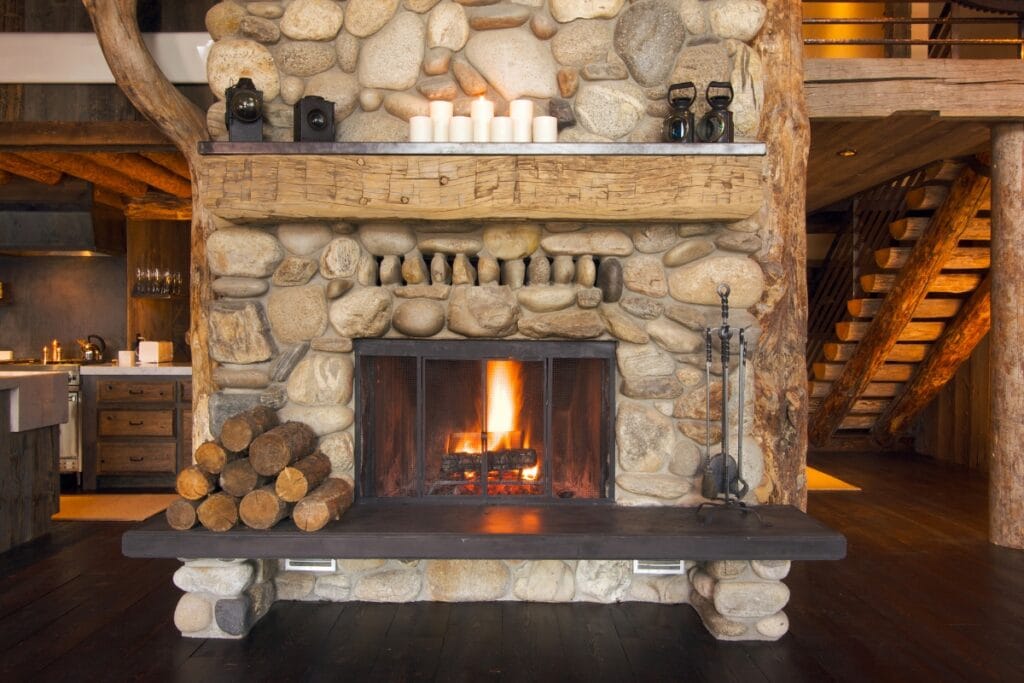
Routine maintenance for wood-burning fireplaces is crucial for ensuring safety and efficiency, requiring regular chimney sweeps to manage particulates and buildup.
For gas fireplaces, implementing a maintenance checklist keeps the system running smoothly, allowing you to enjoy natural warmth without hassle. Both types demand long-term considerations for potential costs like repairs or the installation of stone veneer, influencing your overall fireplace experience.
Routine Maintenance for Wood-Burning Fireplaces
Routine maintenance for wood-burning fireplaces is essential for optimal performance and safety. One critical aspect of this is inspecting and cleaning the chimney to prevent creosote buildup, which can lead to dangerous chimney fires.
You should also check the fireplace insert regularly to ensure it is functioning properly and effectively managing soot and smoke. By maintaining these elements, you enhance the efficiency of your fireplace while reducing the risk of costly repairs.
Another important maintenance task involves cleaning the glass on your fireplace insert, as it can become dirty with soot over time, obstructing your view of the flames.
Using a non-toxic cleaner will ensure the glass remains clear and safe, contributing to the overall enjoyment of your fireplace. Prioritizing these maintenance activities not only keeps your wood-burning fireplace in excellent condition but also extends its lifespan, allowing you to create warm memories for years to come.
Maintenance Checklist for Gas Fireplaces
A regular maintenance checklist for gas fireplaces helps ensure they operate efficiently and safely. To start, inspect the gas lines for any signs of leaks or damage, which could present a potential hazard. Additionally, check the pilot light and thermocouple to confirm they are functioning correctly, as gas fireplaces rely on these components for operation.
Cleaning the venting system is another key maintenance task that should not be overlooked. Dust and debris can accumulate over time, affecting airflow and efficiency. Make sure to also replace any worn or damaged components, such as the glass door seals, to maintain proper insulation and energy savings.
Staying proactive about these maintenance needs not only enhances your fireplace‘s performance but can also positively affect your insurance rates:
| Task | Description | Frequency |
|---|---|---|
| Inspect Gas Lines | Check for leaks or damage | Annually |
| Check Pilot Light | Ensure proper functioning | Monthly |
| Clean Venting System | Remove dust and debris buildup | Annually |
| Replace Seals | Check and replace worn glass door seals | As needed |
Long-Term Maintenance Considerations
When considering long-term maintenance for your wood versus gas fireplace, you need to prioritize regular inspections to prevent issues such as potential gas leaks in gas systems or creosote buildup in wood-burning models.
For gas fireplaces, checking the connections and lines regularly can safeguard against dangerous leaks, while wood-burning fireplaces require annual chimney sweeps to maintain safe operation and efficiency. Addressing these aspects will help you avoid costly repairs down the line and ensure your heating system runs optimally.
Moreover, understanding the differences in ongoing costs between a wood versus gas fireplace can help guide your decision-making. If you utilize a furnace or heat pump alongside your fireplace, ensure all systems are compatible and maintained effectively to maximize efficiency.
This proactive approach will not only prolong the life of your heating sources but also enhance the comfort of your living space, allowing you to enjoy your fireplace for many cozy winters to come.
Maintaining your hardscaping requires steady attention and care. Yet, understanding how this impacts your fuel costs and efficiency turns a good maintenance plan into a great one.
Fuel Costs and Efficiency Analysis
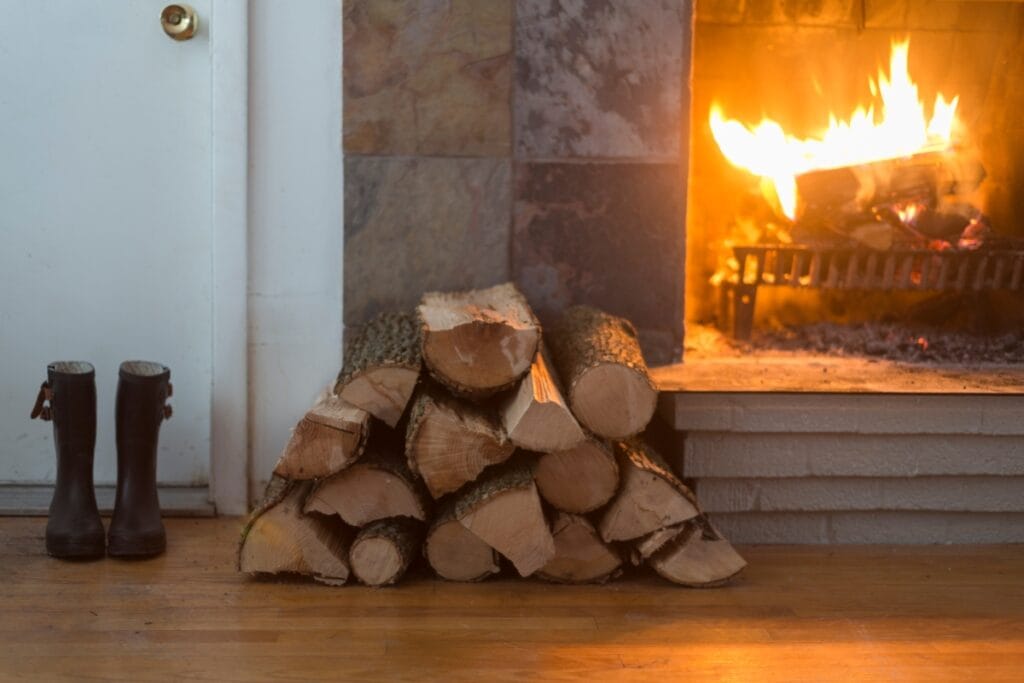
Understanding the average costs of firewood versus gas helps you assess your ongoing fuel expenses. You’ll explore burn efficiency to determine how effectively each type utilizes fuel during combustion.
Additionally, consider seasonal cost variability, especially during power outages when heating needs fluctuate. These insights will guide your decision-making regarding ventilation, odor management, and the overall efficiency of your fireplace system.
Average Costs of Firewood vs. Gas
When considering the average costs of firewood versus propane for your fireplace, you will find that firewood expenses can vary based on local availability and quality.
Typically, a cord of seasoned firewood can cost anywhere from $200 to $400, depending on factors such as your location and seasonal demand. In contrast, propane prices can fluctuate, but they often range from $2 to $3 per gallon, with gas fireplaces consuming about one to two gallons per hour during use.
This difference in fuel costs can significantly impact your budget for maintaining an outdoor fireplace, particularly during colder months when you rely on heating more frequently.
Additionally, it’s essential to consider the efficiency of each fuel option. Wood-burning fireplaces produce carbon emissions that can affect both air quality and your fireplacemaintenance demands. Conversely, propane tends to burn cleaner, reducing carbon output and the need for extensive cleaning and inspections.
Understanding these nuances not only aids your financial planning but also enhances your overall experience, allowing for cozy evenings filled with warm embers and less worry about leaks or maintenance issues.
Understanding Burn Efficiency for Each Type
Understanding burn efficiency is crucial for you as a homeowner when choosing between wood-burning and gas fireplaces. Wood-burning models often have a varied burn efficiency, which can lead to higher emissions and the need for frequent inspections of your chimney to prevent buildup that could cause a chimney fire.
Maintaining an efficient burn is essential for effective heating and minimizing potential fire safety hazards associated with creosote accumulation.
On the other hand, gas fireplaces generally offer a more consistent burn efficiency. They produce cleaner emissions, reducing the need for extensive inspections.
As a result, you can enjoy a cozy atmosphere without the stress of regular chimneymaintenance or the risk of chimney fires, ensuring your home remains safe and warm throughout the colder months.
Seasonal Cost Variability
Seasonal fluctuations can affect the costs associated with operating wood-burning and gas fireplaces. During colder months, the demand for heating increases, leading to higher fuel prices, whether you’re purchasing firewood for your stove or filling a propanetank for your gas firebox.
While wood prices may rise, gas costs can also fluctuate, impacting your overall return on investment when it comes to keeping your room warm and comfortable.
By understanding these seasonal cost variabilities, you can make informed choices about your heating options. For instance, you may find that using a gas fireplace during peak winter months is more economical than consistently buying wood, especially if you calculate the efficiency differences.
Familiarizing yourself with local prices and availability can enhance your decision-making, ensuring that you enjoy efficient warmth without overspending throughout the year.
As you weigh the costs and benefits of efficient fuel use, consider the broader consequences of your decisions. The choices you make today can shape not only your budget but also the world around you, inviting a closer look at our impact on the environment and the quest for sustainability.
Environmental Impact and Sustainability
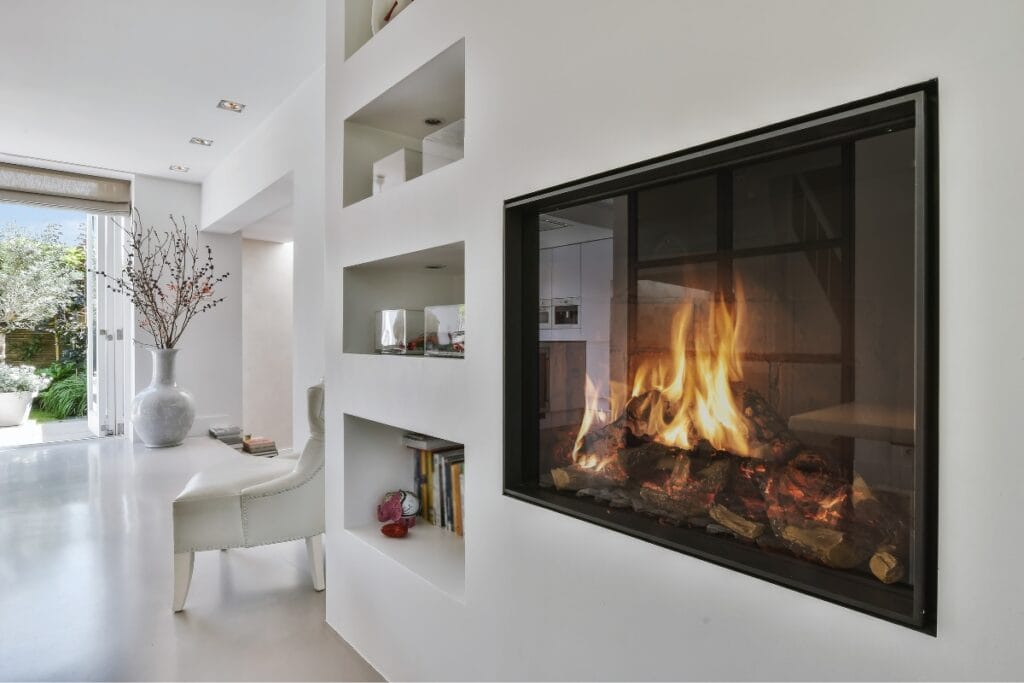
Wood-burning fireplaces emit higher levels of pollutants and contribute to a greater carbon footprint due to the combustion of woodfuel. In contrast, gas fireplaces adhere to environmental standards that reduce emissions and improve heatefficiency.
Exploring sustainability practices for both options will provide you with practical insights to make informed choices about your heatingspace, considering both environmental impact and long-term costs.
Emissions and Carbon Footprint of Wood-Burning Fireplaces
Wood-burning fireplaces contribute to elevated emissions, releasing particulate matter and other pollutants into the atmosphere. These emissions can negatively impact air quality, posing health risks for residents, especially in urban areas with high population densities.
By being aware of these environmental implications, you can make more informed choices about your heating options, possibly opting for cleaner alternatives to mitigate your carbon footprint.
The carbon footprint associated with wood-burning fireplaces is notably higher than that of gas fireplaces. This is largely due to the combustion process of wood, which releases carbon dioxide and other gases into the air.
Understanding these emissions allows you to weigh the long-term effects on environmental sustainability against the warmth and comfort that a wood-burning unit provides, guiding you towards a more eco-friendly decision in your home heating strategy.
Gas Fireplaces and Environmental Standards
Gas fireplaces comply with increasingly stringent environmental standards, making them a responsible choice for homeowners. They produce substantially lower emissions compared to wood-burning units, thus contributing to improved air quality. By opting for a gas fireplace, you actively reduce your carbon footprint while enjoying a clean and efficient heating solution.
Moreover, these fireplaces typically feature technology that optimizes combustion, ensuring maximum energyefficiency. This not only lowers your environmental impact but can also lead to significant long-term cost savings on fuel. Understanding how gas fireplaces meet environmental standards can help you make a valuable investment in sustainability for your home:
| Feature | Gas Fireplaces |
|---|---|
| Emissions | Lower emissions compared to wood units |
| Energy Efficiency | Optimized combustion technology |
| Impact on Air Quality | Improved indoor and outdoor air quality |
Sustainability Practices for Each Type
When considering sustainability practices for wood-burning fireplaces, choosing ethically sourced firewood plays a crucial role. Opting for seasoned wood from sustainable forestry helps ensure that the fuel you use does not contribute significantly to deforestation.
Additionally, implementing practices such as using a high-efficiencywoodstove can enhance combustionefficiency, thereby reducing emissions and promoting a cleaner burn. This approach not only aligns with environmentally-friendly practices but also provides you with a more enjoyable and responsible heating option.
For gas fireplaces, regular maintenance is essential to optimize their environmental performance. By routinely checking gas lines for leaks and ensuring the system operates efficiently, you can minimize harmful emissions.
Furthermore, upgrading to models that feature advanced combustion technology can greatly enhance energyefficiency, contributing to lower fuel consumption. These proactive measures can lead to significant long-term savings while supporting a commitment to clean energy practices and sustainability:
| Feature | Wood-Burning Fireplaces | Gas Fireplaces |
|---|---|---|
| Sustainability Practices | Use ethically sourced firewood; high-efficiency stoves | Regular maintenance; advanced combustion technology |
| Impact on Environment | Improved burn efficiency | Lower harmful emissions |
Understanding the environmental effects of hardscaping can guide your choices. Now, let’s look at how you can apply this knowledge to make informed decisions for your outdoor space.
Conclusion and Recommendations for Homeowners
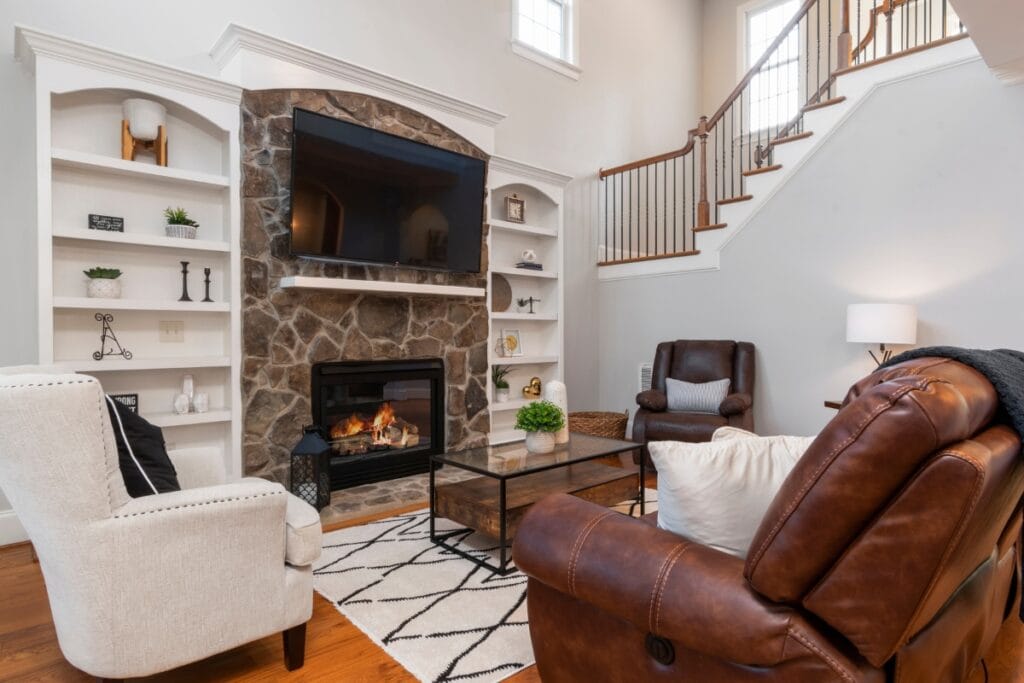
Understanding the cost benefits of wood-burning versus gas fireplaces is essential for your decision-making. Factors such as installation expenses, ongoing fuel costs, and maintenance requirements play a significant role.
You’ll gain practical tips for reducing maintenance expenses, ensuring that you enjoy your fireplace choice without overspending. These insights will help you make an informed decision that suits your home and lifestyle.
Summarizing Cost Benefits of Each Fireplace Type
When deciding between a wood-burning fireplace and a gas fireplace, understanding the cost benefits of each type is essential. Wood-burning fireplaces generally incur higher initial installation costs due to the need for proper venting and ongoing maintenance, such as regular chimney sweeps.
On the other hand, gas fireplaces tend to offer lower installation expenses and reduced maintenance requirements, making them a practical choice for many homeowners looking for a convenient heating solution.
Ultimately, evaluating both immediate and long-term costs can guide your decision. You will want to consider factors such as fuel prices, maintenance routines, and environmental impacts.
Balancing these elements allows you to choose a fireplace type that not only fits your budget but also meets your heating needs efficiently. Here are some key considerations when making your choice:
- Evaluate installation costs based on the complexity of the system.
- Consider fuel availability and pricing for ongoing expenses.
- Assess long-term maintenance commitments and safety inspections.
- Factor in environmental impact and energyefficiency.
Factors to Consider When Choosing Between Wood and Gas
When considering whether to install a wood-burning or gas fireplace, think about your specific heating needs and lifestyle. Wood-burning fireplaces offer authentic charm and warmth, perfect for those who enjoy the hands-on experience of building and maintaining a fire.
However, they require regular maintenance, including chimney cleanings and monitoring for creosote buildup, which can be more demanding over time.
On the other hand, gas fireplaces deliver convenience and efficiency, operating with the simple push of a button. They typically have lower maintenance requirements through their straightforward venting systems, which can save you time and effort.
By weighing these factors, you can select a fireplace that suits your budget, maintenance preferences, and comfort needs, ultimately enhancing your home environment.
Tips for Reducing Maintenance Costs
To reduce maintenance costs for your fireplace, consider scheduling routine inspections to catch potential issues early.
Regular checks, especially for wood-burning models, can prevent costly repairs stemming from creosote buildup and other hazards. By staying proactive with maintenance, you ensure your fireplace operates efficiently while minimizing unexpected expenses.
Additionally, investing in high-quality components can enhance longevity and reduce repairs over time. For gas fireplaces, opt for durable gas lines and reliable thermostats to maintain optimal performance.
By choosing quality materials from the start, you not only improve the efficiency of your system but also lower long-term maintenance costs, making your investment more worthwhile.
Frequently Asked Questions
What are the main differences between wood-burning and gas fireplaces?
Wood-burning fireplaces require regular maintenance and provide a traditional ambiance, while gas fireplaces offer convenience, instant heat, and minimal cleanup. Choose based on your lifestyle and desired outdoor space aesthetic.
How much does it cost to install a wood-burning fireplace?
The cost to install a wood-burning fireplace typically ranges from $3,000 to $5,000, depending on materials, labor, and any necessary permits. Factors like design, location, and features also influence the overall price.
What ongoing maintenance is required for wood-burning fireplaces?
Regular maintenance for wood-burning fireplaces includes cleaning the chimney, inspecting for creosote buildup, checking the flue, and ensuring the firebox remains in good condition to prevent hazards and promote efficient burning.
How do fuel costs compare for gas and wood-burning fireplaces?
Fuel costs for gas and wood-burning fireplaces vary significantly. Gas fireplaces typically offer a more consistent and lower operational expense compared to wood-burning models, which include fuel purchase and preparation expenses, affecting overall heatingefficiency.
What is the environmental impact of using wood-burning versus gas fireplaces?
Wood-burning fireplaces emit more particulate matter and greenhouse gases than gas fireplaces, contributing to air pollution and potential health risks, whereas gas options offer cleaner combustion and lower environmental impact, making them a more eco-friendly choice for heating.
Final Thoughts on Choosing Between Wood-Burning and Gas Fireplaces
Choosing between a wood-burning or gas fireplace depends on your lifestyle, maintenance preferences, and budget. Both options offer unique benefits that can enhance your outdoor living space with warmth and charm.
If you’re ready to add or upgrade a fireplace, trust Atlanta Hardscape Kings to bring your vision to life. Call us today at (470) 606-7895 or get a free estimate for your dream outdoor fireplace through our site form!
